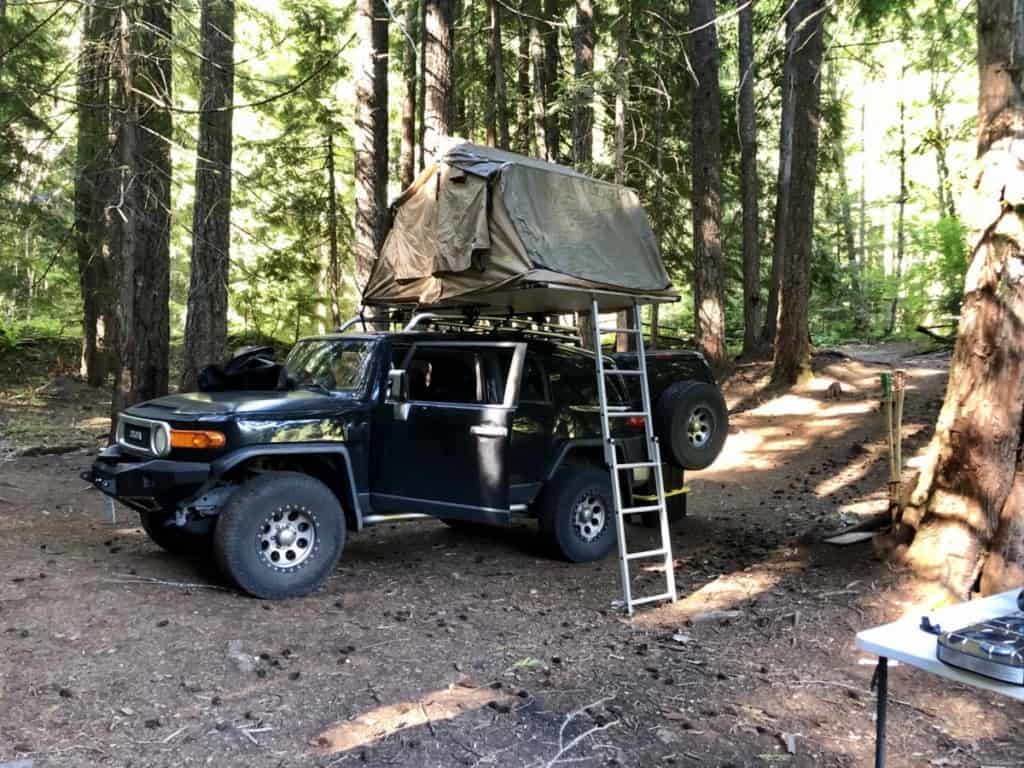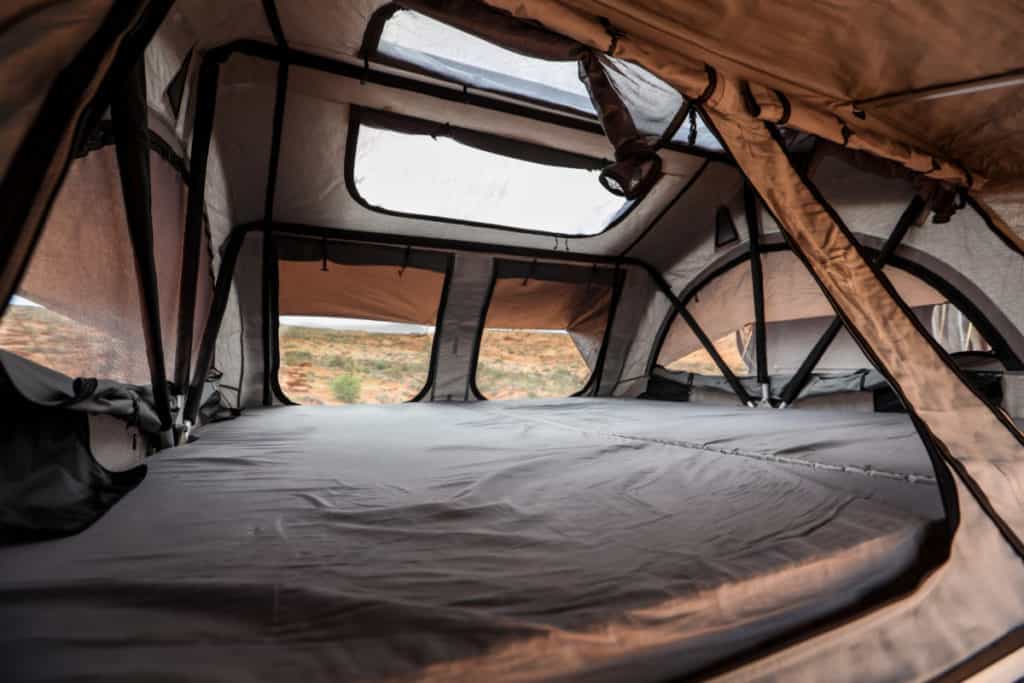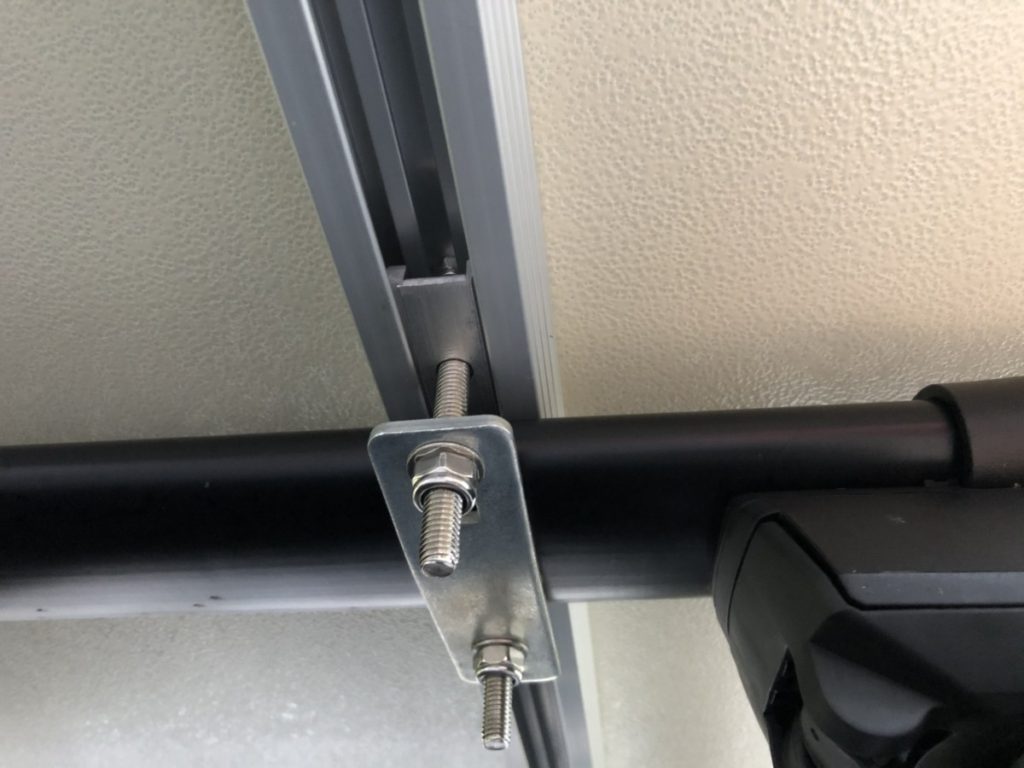For someone that is new to the idea of roof top tents, it is common to wonder if they are safe! After all, they are roughly eight feet in the air, sit on top of a vehicle, and require a ladder to get into.
Roof top tents are safe as long as you properly mount the tent and don’t exceed the rated weight limits.
There are a few key aspects to look at when having safety in mind. The roof rack, weight limits, the ladder, and how you mount the tent are all very important. We will be talking a bit more on each point and the experiences I had when first getting started!
Understanding RTT weight limits
It doesn’t require an immense amount of knowledge to know how to monitor the proper weight limits for the roof top tent (RTT) and the rack it sits on.
However, when I was first buying my crossbar system, I spent hours double-checking to make sure it would properly fit my vehicle’s rails as well as be able to handle the weight of my RTT.
I could easily foresee a scenario where I am driving on the highway and my RTT flies right off of my roof. RTT weights vary anywhere from 100 to over 200 pounds! But once I actually installed my roof rack and mounted the RTT on it, I quickly realized how sturdy it was.

For starters, you do need to buy a capable roof rack. You can go with a crossbar system or a permanent rack, but whichever option you go with it must have crossbars that run from side to side. If you don’t have a roof rack or want to see some examples, look to our article Choosing a Roof Rack System For Your RTT.
When looking at a roof rack, the dynamic weight limit (DWL), must be higher than the weight of the tent. The DWL is the amount of weight the rack can hold while the vehicle is in motion. So if my roof rack has a DWL of 165 pounds, my RTT needs to weigh less than that.
Now, don’t get this confused with static weight limit (SWL), which is much higher since it is the amount of weight the rack and vehicle can support while NOT in motion.
The SWL will be around 700 pounds, or more, for a standard crossbar system. You should also check the weight limit for your vehicle’s roof as well.
The RTT itself can handle a fair amount of weight as well. The general rule of thumb for their weight limits is 200 pounds per camper for which the tent is rated to sleep.
So if you have a three-person tent, the weight limit is likely 600 pounds. There are some exceptions to this, but if there are, the tent manufacturer will detail that in the description of the tent.
By simply looking at product descriptions and owner manuals, you can ensure you won’t exceed any weight limits.
Roof top tent ladder safety
Another safety concern one might have is the ladder. Similar to any other ladder, you should implement a three-point contact rule when in use. You can read more about ladder safety, the three-point contact rule, and best practices at OHSA.gov.
RTT ladders should be set at about an 80° angle. This may seem a bit steep, but you don’t want the ladder too flat.

If you’re concerned with weight limits while on the ladder, you shouldn’t be too worried. The average RTT ladder can hold roughly 250 pounds, while many can hold over 300 pounds!
There are two types of ladders used on RTTs. One is a sliding ladder, which slides back and forth on a set of tracks. You then have to lock a knob into a predrilled hole to secure the ladder. I’ll admit, this is a little sketchy to use and I even question if it is locked in place.
The other option is a telescoping ladder which is far superior. They are easier to set up, more sturdy, and you won’t have to worry about locking it into place.
The higher-end tents often come with this ladder, but if you’re looking to make an upgrade, you can make modifications to your RTT and install a telescoping ladder for a couple of hundred bucks!
If you use the ladder as it is meant to be, I don’t see how one would need to worry about this. If you have kids I would recommend helping them up and standing behind them as they get into the tent.
Inside the roof top tent
Speaking from my experience in our RTT, I was actually fairly intimidated climbing up to it and getting in. Once you’re about eight feet in the air you feel much higher up than you are.

It also feels odd knowing the ground isn’t under you. Also, the RTT will feel secure, but it has a little bit of a wiggle or shake to it. If you think about it, you can sit in your car and easily shake the whole vehicle, so the same applies to the RTT as well!
Believe it or not, after a few uses, you will quickly adjust to this. I think it is just a matter of getting used to the new idea and setup!
It is important to make sure your vehicle is as level as possible when you set up your tent. This way you won’t roll around inside the tent.
Proper roof top tent installation

The installation process for RTTs is very straight forward. You simply secure it with four mounting brackets. Each mounting bracket has two bolts, nuts, and washers that you tighten into place.

This process really is fool proof. The hardest part about the installation is lifting the RTT into place. After that, you’re pretty much set.
Since you have taken all of the precautionary steps for not exceeding any weight limits, all that’s left to do is tighten it into place.
Beginner Info
If you’re new to RTT camping and want more information about how they work, what they cost, or other interesting details about them, check out our Youtube channel!
Additionally, you can explore the beginner info section by clicking on the blog drop down tab in the menu of our website. As a newcomer, I wish I had some of these resources just so I could educate and fast track my knowledge that much quicker!
Summary
Being concerned about the safety of a RTT is a reasonable concern! I had people ask me that about my RTT when I first got it too. But one thing you have to understand is these tents are designed to be taken off roading and put in harsh climates.
Like any product, you need to use it correctly and if you do, everything will be just fine. Take the time to properly research the weight limits and the rest is common sense.
